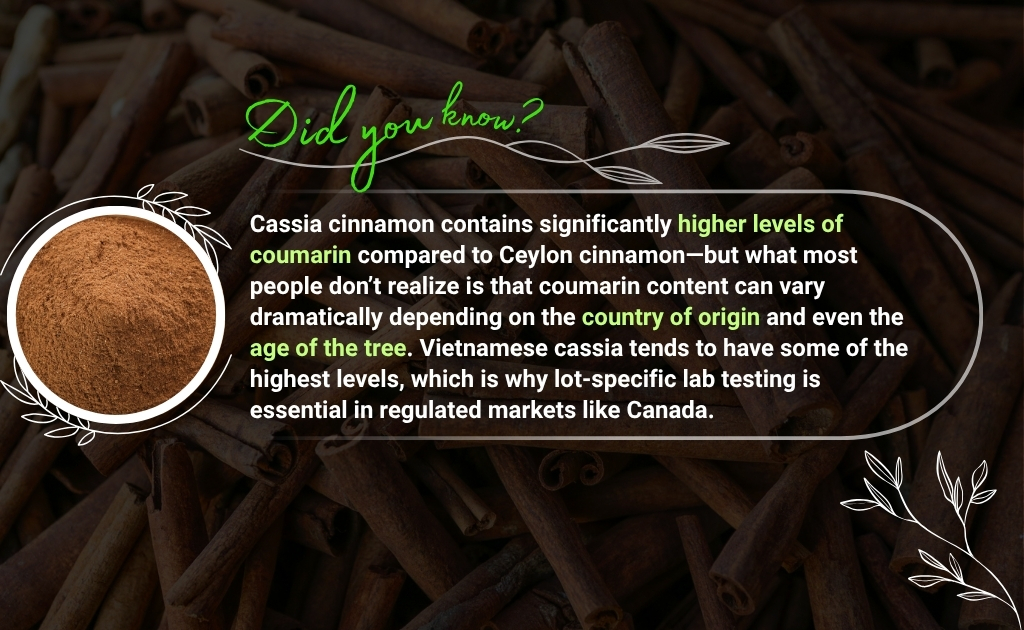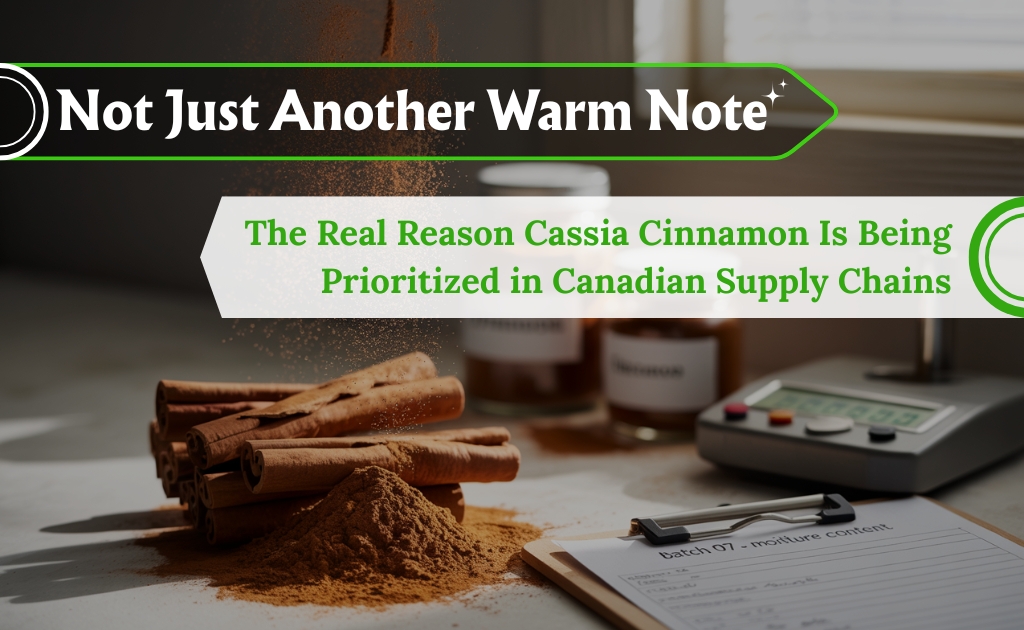I’ve been watching Organic Cassia Cinnamon Powder gain traction across Canadian industries—from food and beverage to personal care and animal nutrition—and I’ll be honest, it’s not just the warm, spicy profile that’s getting attention.
There’s something deeper happening here. Formulators and sourcing heads are now treating cinnamon not as a seasonal flavor, but as a functional, label-friendly component that ticks several boxes at once. When we think of formulation efficiency, cost-effectiveness, and clean-label positioning, cassia cinnamon is stepping up in a big way.
Let’s unpack what’s really driving this shift—and what you need to keep in mind if you’re considering bulk sourcing for your next product line.
The Backbone: What’s in Organic Cassia Cinnamon Powder?
Cassia cinnamon, specifically from Cinnamomum cassia, is naturally rich in cinnamaldehyde—that’s the compound responsible for its bold aroma and antimicrobial strength. From a formulation perspective, that matters.
Here’s what it brings to the table:
- Cinnamaldehyde (~90%): supports natural preservation, adds a sharp-spicy aroma.
- Polyphenols & tannins: deliver antioxidant benefits, important for skin-care and functional food applications.
- Coumarin: the compound that raises regulatory eyebrows—more on that in a moment.
This chemical makeup gives cassia cinnamon an edge in product development. It’s not just about flavor; it’s about how that flavor interacts with preservation, shelf life, and formulation stability. Especially for those of us working on clean-label reformulations, cassia’s dual role as a flavor and a functional is incredibly useful.

Where We’re Seeing the Most Action
In the last 18 months, I’ve noticed significant interest from:
- Food & Beverage manufacturers looking to build out spice-forward SKUs—especially snack coatings, flavored cereals, and seasonal or spiced RTDs.
- Supplement formulators incorporating it into blood sugar blends or digestion-focused capsules.
- Cosmetic R&D teams who value its warming effect and antibacterial properties for oral care, lip care, and scrubs.
- Animal nutrition formulators trialing cinnamon as a natural growth promoter or feed preservative.
What’s interesting is how the boundaries between these categories are blurring. A few teams I’ve spoken with are even exploring cassia in hybrid formats—think nutraceutical beauty or wellness beverages.
Why Sourcing Isn’t Just About Price Anymore
One of the recurring challenges we’ve faced in the past—especially post-pandemic—is balancing price, purity, and provenance. Organic cassia cinnamon powder often comes from Southeast Asia (primarily Indonesia and Vietnam), but quality can vary widely.
In 2024, we saw multiple recalls due to lead contamination in ground cinnamon products. That’s led to renewed emphasis on batch-level testing, especially for heavy metals and coumarin levels. It’s something I never skip in due diligence.
If you’re sourcing for Canadian markets, you’ll want to make sure:
- Your supplier can provide organic certification (preferably Canada Organic).
- Each batch comes with a Certificate of Analysis, showing acceptable levels of lead, coumarin, and pesticide residues.
- Your team has a testing protocol in place—ideally using ISO-accredited labs before the product enters your facility.
The cost of skipping these checks? A potential CFIA issue or, worse, a product recall. In my view, it’s not worth the risk.
Let’s Talk Scale: Bulk Buying FAQs I Get All the Time
Q: What’s a typical lot size for cassia powder in industrial settings?
A: Anywhere from 500 kg to 20 MT, depending on the end-use. Smaller nutraceutical teams often start at 1 MT with quarterly shipments.
Q: Is cassia cinnamon allowed in clean-label formulations?
A: Yes, but coumarin content matters. In Canada, we don’t yet have strict limits like the EU (0.1 mg/kg body weight per day), but formulators still need to manage intake thresholds.
Q: What’s the smart way to price-protect bulk orders?
A: I usually recommend forward contracting—especially in Q4 when demand spikes. Also, dual-sourcing can help mitigate regional disruptions like floods or logistics bottlenecks.
What the Market Is Telling Us
The global cinnamon market was worth around $1.4 billion in 2024, and it’s projected to continue growing steadily. But more relevant to us in Canada is this: North American demand for organic cinnamon products is growing faster than the global average. That’s largely thanks to the functional food movement, clean-label reformulations, and consumer awareness around ingredient origins.
From what I’ve seen in formulation labs and on procurement calls, cassia cinnamon isn’t a niche spice anymore. It’s becoming a core functional.
One Last Thing to Keep in Mind
If you’re developing a formulation where cinnamon is central—whether that’s a spice blend, a natural toothpaste, or a supplement—it’s worth considering how processing method affects performance. Steam-sterilized powder may offer better microbial stability, while freeze-dried or CO₂-extracted formats are better for premium SKUs.
And of course, transparency matters more than ever. If your end customers care about sustainability, traceability, or fair sourcing, your choice of cassia supplier says a lot about your brand—even if your name isn’t on the ingredient label.
In Summary
Organic Cassia Cinnamon Powder isn’t just a pantry staple anymore. For those of us in formulation, R&D, and sourcing, it’s becoming a strategic input. But it’s not one to take lightly. The sourcing, testing, and compliance layers matter—especially in a market like Canada where both innovation and oversight are moving quickly.
If you haven’t reevaluated your cinnamon strategy recently, now’s the time.



